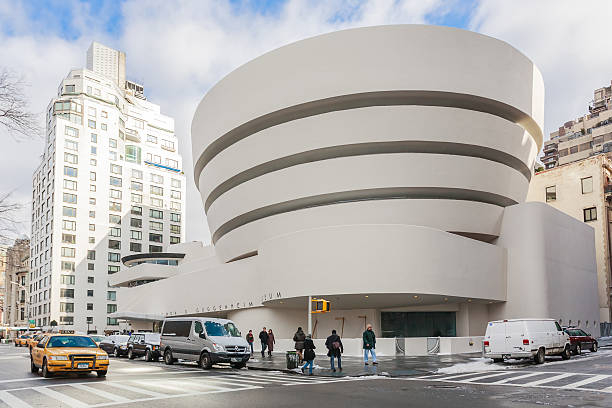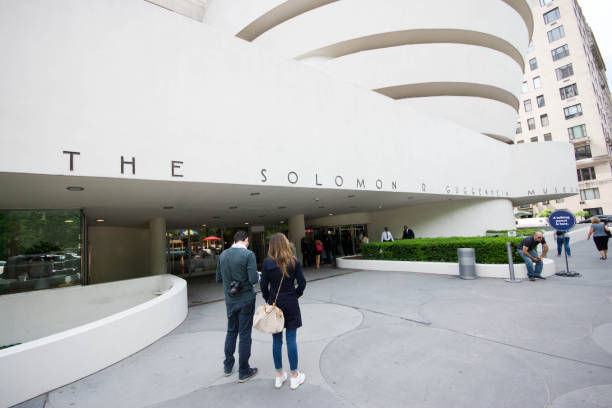The Guggenheim
Guggenheim Museum, worldwide museum run by the Solomon R. Guggenheim Foundation that acquires and displays modern and contemporary art in New York City and other locations. The Solomon R. Guggenheim Museum in New York City, the Peggy Guggenheim Collection in Venice, and the Guggenheim Museum Bilbao in Spain are the Guggenheim's component museums.
The museum found a permanent home in an innovative new structure built by Frank Lloyd Wright in 1959. The structure, spiraling upward and outward in elegantly sculptured coils of vast plain white concrete, is a striking departure from standard museum architecture. The interior exhibition area consists of a spiral staircase of six "stories" around an open center space lit by a glass dome supported by stainless steel. Many of the artwork's "float" off the angled outer wall on hidden metal arms. In 1992, the museum was extended with the construction of a neighbouring 10-story tower. Wright's structure became one of his most recognizable designs, and it was named a UNESCO World Heritage site in 2019.
The Guggenheim Museum houses a large collection of European painting from the twentieth century as well as American painting from the second half of the century. The museum has the world's greatest collection of Wassily Kandinsky paintings, as well as pieces by Pablo Picasso, Paul Klee, and Joan Miró, among others. Modern sculpture is highly represented as well.
Location: Bilbao, Spain












